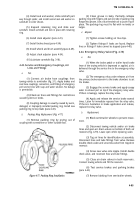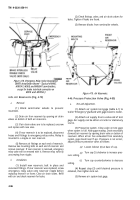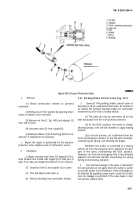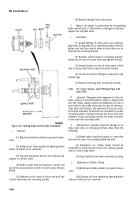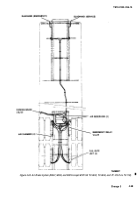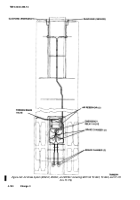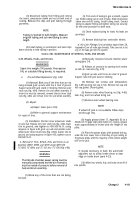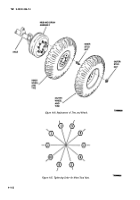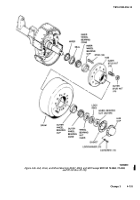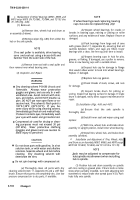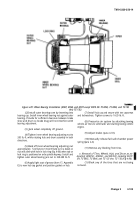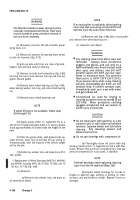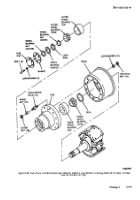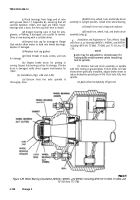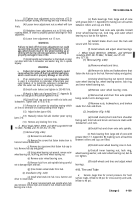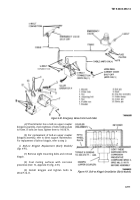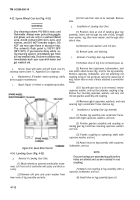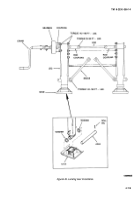TM-9-2330-356-14
SEMITRAILER, TANK: 5000 GALLON, BULK HAUL, SELF LOAD/UNLOAD M967 AND M967A1; SEMITRAILER, TANK: 5000 GALLON, FUEL DISPENSING, AUTOMOTIVE M969 AND M969A1; SEMITRAILER, TANK: 5000 GALLON, FUEL DISPENSING, UNDER/OVERWING AIRCRAFT M970 AND M970A1
TECHNICAL MANUAL; OPERATOR’S, UNIT, DIRECT SUPPORT, AND GENERAL SUPPORT MAINTENANCE MANUAL
OCTOBER 1990
TM-9-2330-356-14 - Page 240 of 528
TM 9-2330-356-14
c.
Replacement of Wheel Bearings (M967, M969, and
M970 except M970 SN TC-0843, TC-0844, and TC-103 thru
TC-178) (F{g. 4-86).
(1) Removal.
(a)
Remove tires, wheels hub and drum as
an assembly
(b
above).
(b)
Remove wiper (fig. 4-86) from either the
hub or the axle spindle.
NOTE
If no seal puller is available, drive bearing
cone
and seal out using a brass drift and
hammer from the outer side of the hub.
(c)
Remove inner seal with a seal puller and
then remove inner wheel bearing cone.
(2)
Inspection and Repair.
WARNING
Dry cleaning solvent P-D-680
Is
toxic and
flammable.
Always wear protective
goggles and gloves, and use only In a well-
ventilated area. Avoid contact with skin,
eyes, and clothes, and DO NOT breathe va-
pors. DO NOT use near open flame or ex-
cessive heat. The solvent’s flash point is
100°F-138°F (38°C-59°C). If you be-
come dizzy while using cleaning solvent,
Immediately get fresh air and medical help.
If solvent contacts eyes, Immediately wash
your eyes with water and get medical aid.
Compressed air used for drying or clean-
ing purposes must not exceed 30 psi
(207 kPa).
Wear protective clothing
(goggles and gloves) and use caution to
avoid injury to personnel.
CAUTION
Do not clean parts with gasoline, In a hot
solution tank, or with water and alkaline
solutions. Separate wheels and hub before
cleaning.
Dry cleaning solvent will
deteriorate the tires.
Do not spin bearings with compressed air.
(u)
Thoroughly clean all parts with dry
cleaning solvent (item 11. Appendix E) and a stiff fiber
brush. Ensure that parts are completely dry. Use low
pressure compressed air to dry parts, if available.
NOTE
If wheel bearings need replacing, bearing
cups must also be replaced (Step
(d)).
(b)
Inspect wheel bearings for cracks or
breaks in bearing cage, etching or pitting on roller
surfaces, and any evidence of wear. Replace if worn or
damaged.
(c)
Pack bearings from large end of cone
with grease (item 17, Appendix E), ensuring that ail
cavities between rollers and cage are filled. Cover
bearings with a clean, lint-free rag until time to install.
(d)
Inspect bearing cups in hub for pits,
grooves, or flaking. If damaged, use a puller to remove.
Drive in new bearing cups with a suitable driver.
(e)
Inspect hub cap for damage to flange
that would allow water to leak into wheel bearings.
Replace if damaged.
(f)
Replace hub cap gasket.
(g)
Cheek threads of studs, screws, and nuts
for damage.
(h)
Inspect brake drum for pitting or
scoring. Inspect hub bearing surface for damage. If brake
drum is damaged, notify direct support maintenance for
repair.
(3)
Installation (Figs. 4-86 and 4-87).
(a)
Ensure that the axle spindle is
thoroughly clean.
(b)
Install inner seal and wiper using seal
replacer.
(c)
With tire, wheel, hub. and brake drum
assembly in upright position, install inner wheel bearing.
(d)
Install tire, wheel, hub, and brake drum
assembly
(d
below).
d.
Installation and Adjustment of Tires, Wheels, Hub,
and Drum as an Assembly (M967, M969, and M970 except
M970 SN TC-0843, TC-0844, and TC-103 thru TC-178).
NOTE
Jack may be adjusted to compensate for
hub/spindle misalinement when installing
hub to spindle.
(1) Position hub and drum assembly on spindle
with tires resting on greased plate. If drum binds on brake
shoes when partially installed, turn both adjusting bolt
starwheels to reduce brake shoe spread (para 4-33). Push
hubs fully onto spindle.
4-104
Change 3
Back to Top


